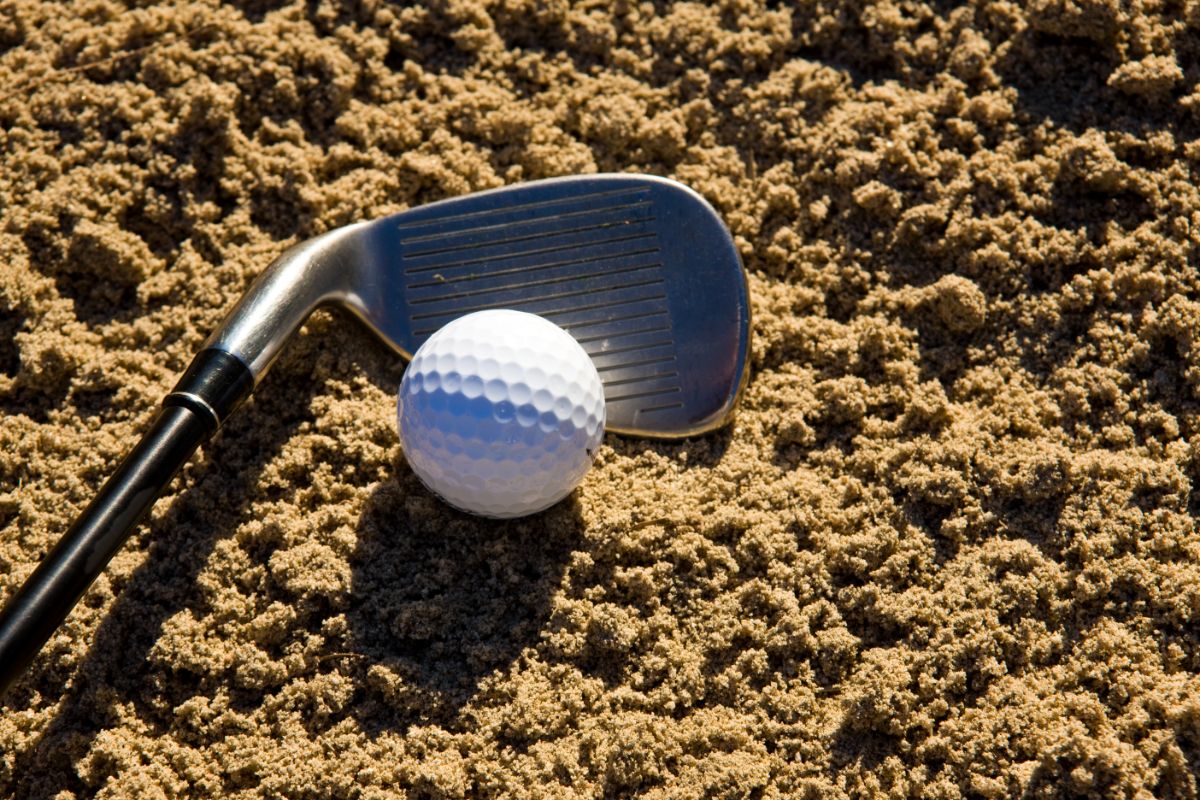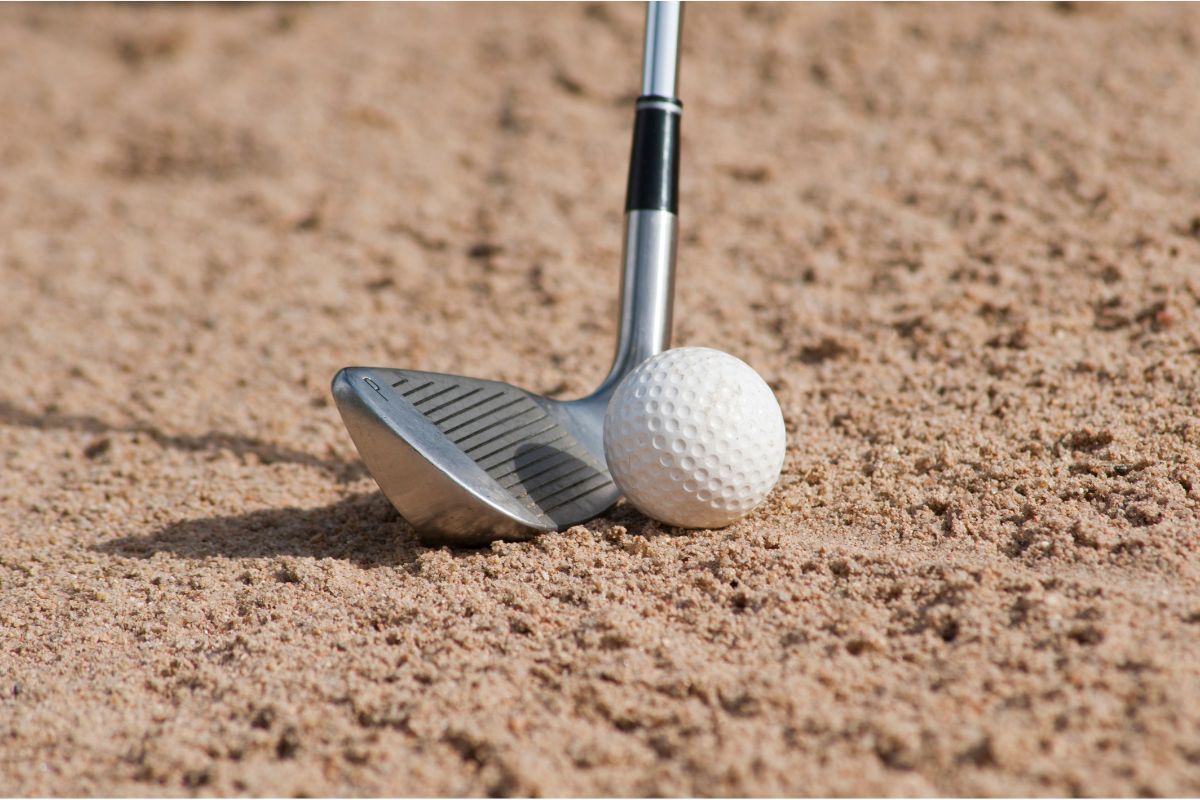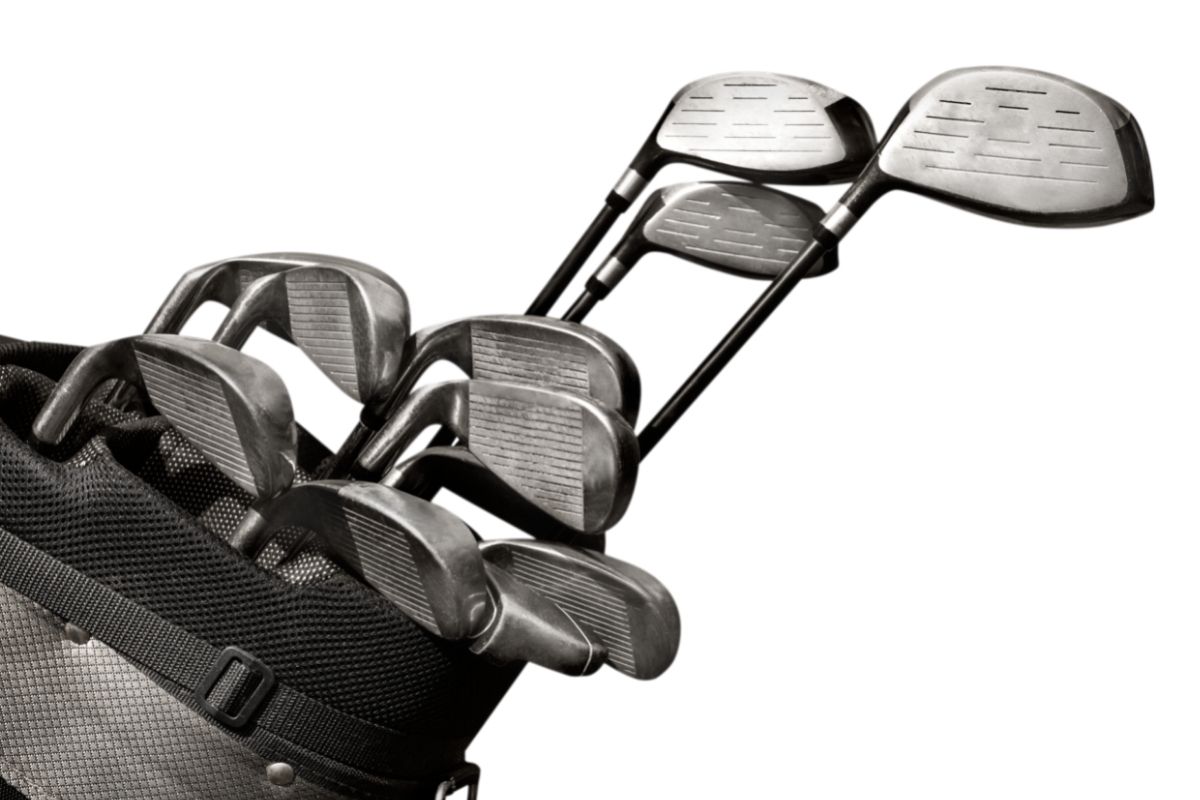We occasionally recommend products we love and might be paid a share of the sale.
Your wedge lofts, from the sand wedge to the pitching wedge, are most likely messed up. However, it is not your fault.

For decades, manufacturers have been tightening the lofts on irons, and while there are benefits and drawbacks to this approach, it does mean that players must pay close attention to how their shorter irons and wedges are positioned within their set.
Proper spacing between clubs will result in important yardage gaps, and keeping those distances consistent will result in far more short shots which finish closer to the hole. In this article we will provide a few hard and fast wedge loft principles to keep in mind when hitting the golf course.
What Is The Purpose Of A Pitching Wedge?
Most iron sets include a pitching wedge as standard equipment. It’s an excellent tool for chipping around the fairway, pitching, and striking longer approach shots.
When striking a less-than-full shot, a simple advice is to grasp the club further down; this provides you more stability and helps you to create a better swing.
What Is A Pitching Wedge’s Degree?
The loft of a pitching wedge is 46° to 48°. Certain high handicap iron sets, on the other hand, can contain pitching wedges with lofts as high as 44 degrees.
Golfers often hit a pitch wedge 90 to 120 yards, however this varies greatly depending on the pitching wedge’s loft, striking quality, and swing speed. Longer hitters can hit a pitching wedge up to 150 yards.
Related article: Average Golf Club Distances Every Golfer Wants To Know To Play Better
What Is The Purpose Of A Gap Wedge?
The goal of a gap wedge (or attack wedge) is to bridge the space with your pitching wedge and sand wedge. A gap wedge is usually purchased separately from the rest of your set as an add-on.
It’s similar to a pitching wedge in terms of chipping, pitching, and approach strokes, but because of the extra loft, it flies somewhat higher and shorter.
What Is The Purpose Of A Sand Wedge?
The sand wedge is by far the most lofted tool in a standard set. It’s not just for chipping, pitching, and hitting tall approach shots through into the fairway. The bottom of the club is what distinguishes a sand wedge; it has greater bounce, which will be explained later in this article.
What Is A Sand Wedge’s Degree?
The loft of a sand wedge is 54°- 58°. A lob wedge is a wedge that has a loft of more than 58° degrees. A sand wedge is typically struck 60 to 80 yards by golfers.
What Is The Purpose Of A Lob Wedge?
One of the most lofted tools a player can buy is a lob wedge. They are not included as standard, but can be purchased as an add-on. They can be an excellent club for striking great lofted chips and for hitting out of bunkers.
What Is A Lob Wedge’s Degree?
The loft of a lob wedge is 60°- 64°. You can find lob wedges with lofts ranging from 60 to 64 degrees, but I wouldn’t recommend buying one with more than 60 degrees. The club becomes more helpful since the extra loft lowers the range of situations in which it can be used.
What Is The Purpose Of An Approach Wedge?
Gap wedges, sometimes known as g wedges, are another term for an approach wedge. These, too, fluctuate in the loft between 50 to 52 degrees.
Although the term ‘approach wedge’ is more commonly used in the United States, the terms ‘gap wedge’ and ‘approach wedge’ are interchangeable.

Wedge Loft Tips And Tricks For Golf
Determine The Number Of Clubs You’ll Need In Your bag, Upto Including The 9-Iron
If the amount of clubs you’re carrying from your putter to the 9-iron is 11, you have only space for three wedges. If it’s ten, you’ll have enough space for four wedges.
If you can only possess three clubs to take you beyond your 40-degree 9-iron, you’ll be getting a ton of in-between as well as half strokes in the score zone when you should be hitting full shots.
Finding a means to make room in your bags for one additional wedge will allow you to use more appropriate clubs for different shots. You’ll be willing to handle a complete swing rather than attempting to hit shots with a 3/4 swing.
Know The Loft Of Your Throwing Wedge
If the angle is 45 ° fewer, add three more wedges, spaced not more than 4-5 degrees apart. In general, a gap wedge of 48 and 50 °, a sand wedge of 54 to 56 °, as well as a lob wedge of 58 to 60° should be used.
These are just suggestions; make sure you work alongside your fitter to achieve the gapping that’s right for you.
Between The Pitching Wedge Loft As Well As Your Sand Wedge Loft, You Should Have A Wedge
Between those two clubs, the gap wedge (typically approximately 50 degrees) adds crucial distance. Because the gap wedge will almost certainly be a full-swing club, we recommend that you try to match this to the short irons as well as pitch wedge in your set. You’ll be using the sand wedge with lob wedge more on the fairway than in complete strokes.
Remember that wedges, whether strong or weak, can simply be flexed a degree or two to reach the necessary loft spacing. This implies your 50° wedges can easily become 51° or 49 ° clubs.
However, keep in mind that changing your lofts of the high-lofted wedges can also change the bounce angle. Every degree of strength decreases bounce, and vice versa.
Although super high lofted wedges may assist the ball get into the air faster, we believe that a total loft of 58° provides the most adaptability and a much more stable contact for improved greenside spin.
How To Strike Wedges Tight From All Distances
Get in touch with a fitter to learn more about how the wedges should operate together. In addition, if you’re getting fitted for irons, a wedge fitting is a terrific way to round out the remainder of your bag.
Related article: Golf Club Distance Charts
Common Wedge Gapping Issues
Every iron in a set used to be separated by 4-5° in loft, with only a sand wedge possessing 56o of loft and every club having 4-5° lower loft as you progress downward to a 3-iron.
Modern sets, on the other hand, have lowered the lofts of all their irons, leading to long distances but posing a serious challenge when striking strokes from inside 120 yds of the green.
Many players have a 2-3 club separation in their PW and SW since current pitching wedges are just 45–48° (historically 50–51°). As a result, manufacturers devised a new club dubbed a ‘gap wedge’ to market to golfers.
Final Thoughts
Many golfers ignore their wedge setup, but this is one area where investing in the right equipment may save you a lot of shots. Hopefully, this guide has clarified the fundamentals of wedges and provided you with a few useful tips for improving your wedge set.
- Funny Golf Terms - February 21, 2023
- How To Play Vegas Golf Game - February 16, 2023
- How To Play Wolf Golf Game - February 16, 2023








